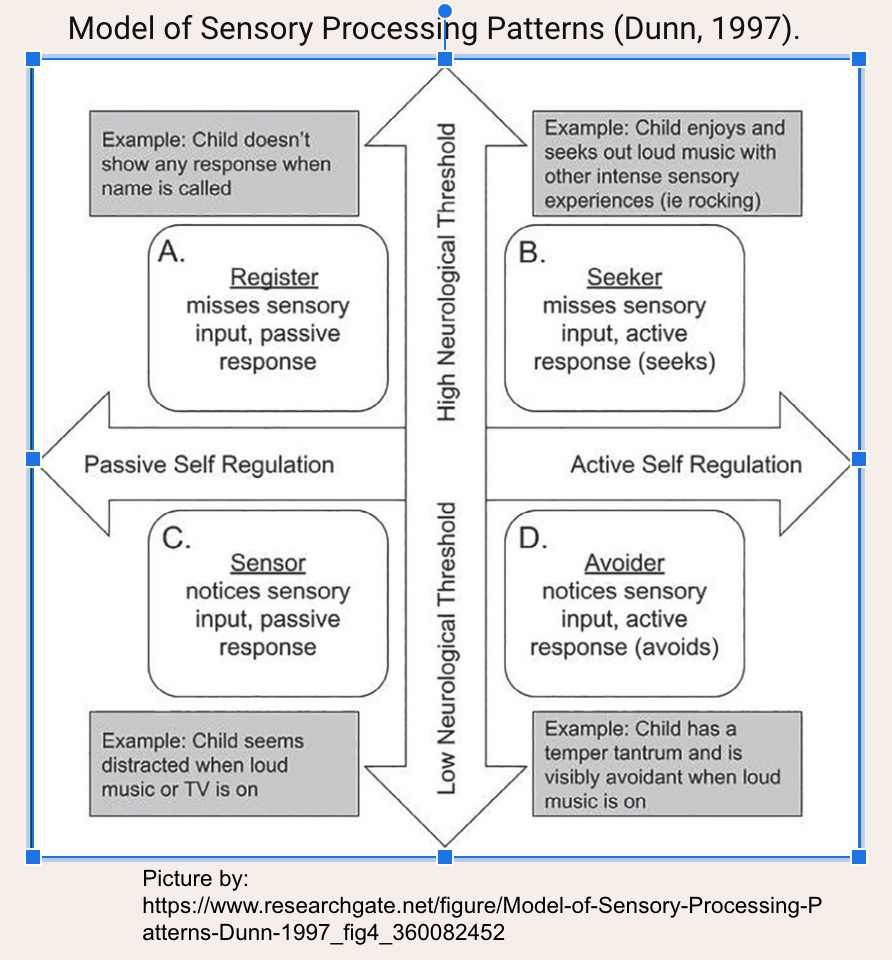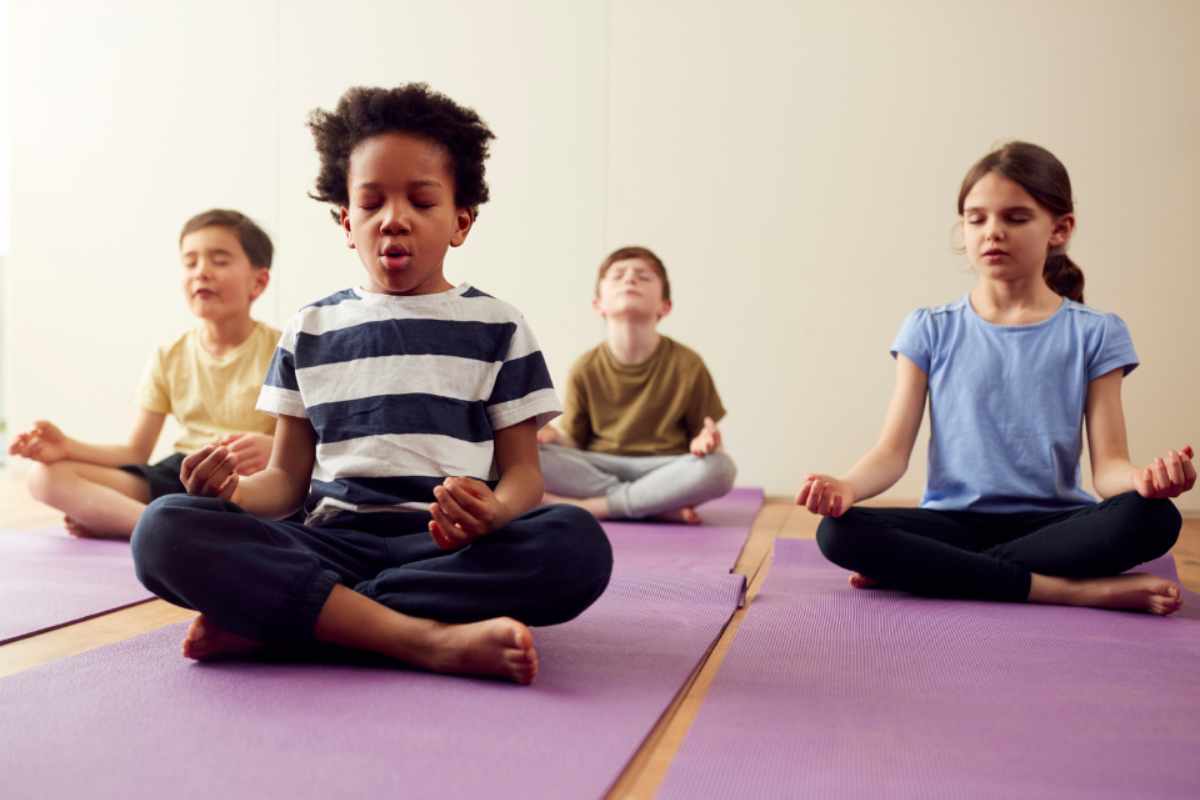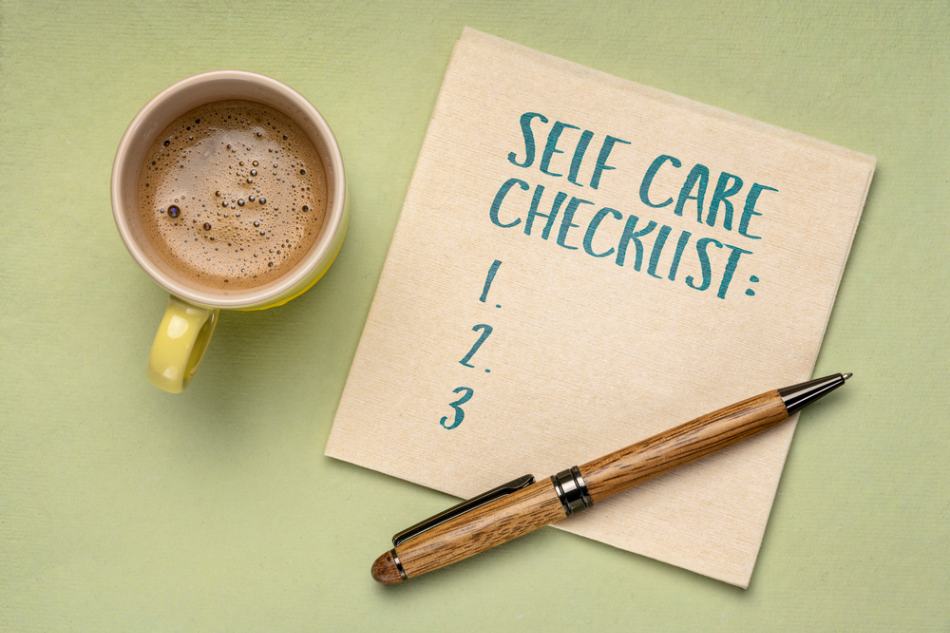August 10, 2023
Webinar: Helping your Children Understand their Emotions
Written by Rachel Eddins
Posted in Parenting & Family, Webinars and with tags: emotion regulation, parenthood, parenting
Kids can throw tantrums, act out, have meltdowns, have trouble settling, etc when experiencing big emotions. In this webinar, learn effective strategies to help your child understand, express, regulate, and manage their big emotions in healthy ways.
This webinar is presented by Jessie Blakely, LPC Associate. Jessie is under the supervision of Diana Cabrera-Stewart, LPC-S.
Watch a replay of the presentation here.
Webinar Transcript: How to Help Your Children Understand Their Emotions
Today we are going to review four strategies parents can use to help their children cope with emotions:
1. Strategies to help parents gain more control of their interactions with their children
2. Coping strategies and techniques to help your children have better emotional regulation
3. Learn the cues to help with self-control, awareness, and mindfulness
4. Formulate tools to use during meltdown moments.
Behavioral Challenges Can Surface When Your Child’s Basic Needs Aren’t Met
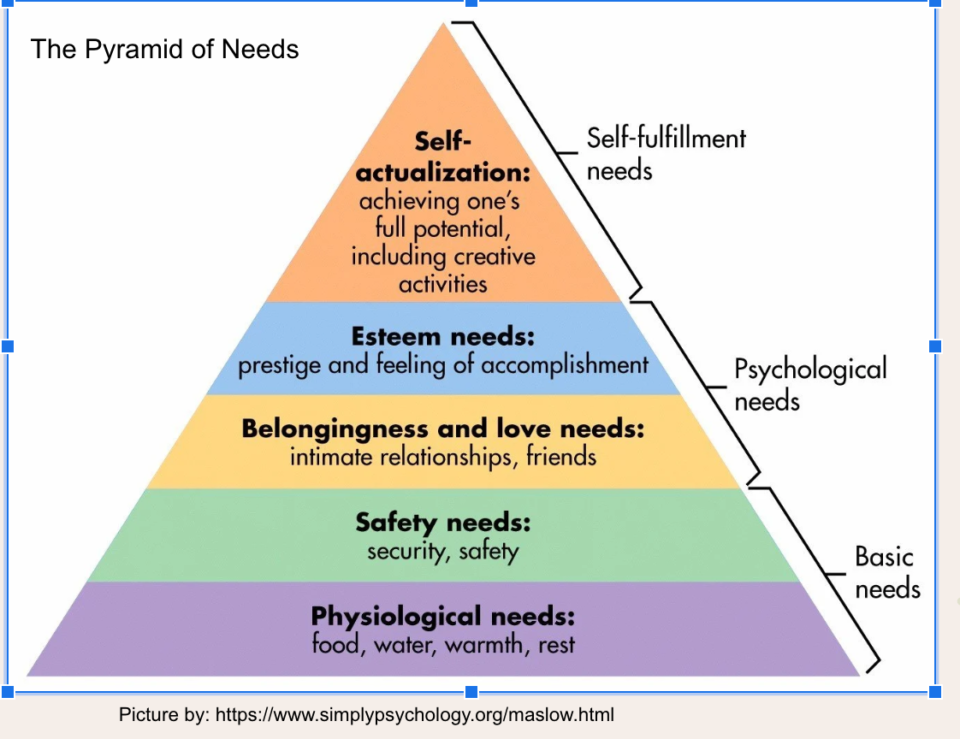
At the bottom of the pyramid of needs listed above are food, water, and rest. If your child is hungry, thirsty, or tired it is pretty hard to try to have any form of a conversation, let alone redirection. Or even trying to help reason or help your child understand.
Focus on your child’s physical needs first.
Some great questions to ask when seeing your child having a meltdown, tantrum, arguing, resistance, or fighting back, are, “Is my child hungry, thirsty, or tired?” Are there common clues (ie., times of day) that can help you recognize that?
Next ask, “Does my child feel safe physically and emotionally?”
This one can be harder to identify as you may not know what your child has experienced. For example, perhaps your child caught news of a fire burning down a large part of a town due to dry grass. It can feel unsafe to a child that grass can just “catch on fire” and cause such destruction.
Or in a school setting, your child may have experienced stressful peer interactions or even bullying situations.
It can be more challenging as a parent since children often don’t communicate their worries or feelings in the same way adults might. They just show you through behavior that something is not right.
Connect on Your Child’s Level
Rather than trying to ask about something specific, consider how your child prefers you to show that you are there for them. Connect first, then redirect behavior.
- Physical touch – how does your child prefer to receive affection?
- Redirecting to needs: “Let’s have a snack”, or, “I see you rubbing your eyes”
- Offer some water: sucking on a straw can be soothing for kids experiencing dysregulation and meets the need for thirst.
- Identifying emotions – “I notice your hands are clenched.”
Understanding Your Child’s Sensory System & Emotional Regulation
The sensory system plays a big role in your child’s ability to regulate emotions and become dysregulated. The sensory system includes:
- Touch (tactile)
- Movement (vestibular system)
- Muscles and joint stimulation (proprioception)
- Smell (olfactory)
- Visual
- Auditory
- Taste (gustatory)
You may already recognize how input into these sensory systems can be an emotional dysregulation trigger for your child. If you’re not sure, pay attention to the sensory cues in your child’s environment as you experience behavioral challenges. See if you can identify how your child takes in information (auditory, visual, physical) and what systems can get hypersensitive.
Here are a few examples of sensory triggers:
Remember, in a moment of overwhelm, your child doesn’t quite have the words, or the space, to communicate the sensory trigger. They are just responding through behavior to overstimulation.
- Touch: tactile triggers can include discomfort in clothes such as irritating tags, uncomfortable jeans, and itchy sweaters.
- Movement: children have lots of energy! Lack of movement or long periods of attention demands can be a trigger. Conversely, in some children, spinning or certain types of movement can be a trigger.
- Muscles: sensory seeking children may be jumping on furniture, hanging on others, hitting, kicking, or otherwise moving their body to get the stimulation their muscles and joints crave.
- Smell: strong scents can trigger an unpleasant reaction.
- Visual: bright lighting, and commonly, the overstimulation of videos or screens can be a trigger. Large crowded environments can also be visually overstimulating.
- Auditory: noise coming in at different directions can be a trigger for example, at church, a dance recital, or other loud environment. Particularly triggered is having sounds coming from different directions and the child may not realize why it is overwhelming. Notice if your child covers their ears, or how they respond to different types of sounds.
- Taste: different textures of foods can be a trigger.
Each of these sensory overwhelming experiences can trigger the fight, flight, or freeze response.
Sensory Response Patterns
The graph below illustrates different styles of sensory processing patterns – sensory seekers, registers, sensors, and avoiders.
Notice some of the common patterns in the graph and identify where your child(ren) may fall. This can help with understanding how your child’s environment plays a role in sensory over or under-stimulation and resulting emotional outburst behavior.
When an emotional outburst has occurred, you can help your child better understand their own body, which they are having a reaction to, and begin to identify helpful regulation activities.
Sensory seekers miss sensory input and seek it out in their environment to regulate.
- May struggle to recognize how intense their body preferences are compared to others.
- May seek out physical activities such as rocking, swinging, climbing, or jumping.
- Regulate through deep input such as joint compressions, a squeeze, scratching the back, lifting heavy objects, or “shaking” (carefully) the arms by holding the wrists, or a vibrating toothbrush.
- Here are more examples of deep-pressure activities that can help with regulation.
Sensory avoiders notice sensory input and avoid it to regulate.
- Sensory avoiders easily notice sensory input in their environment and actively attempt to avoid it.
- Create sensory experiences that can help your child calm: a quiet corner or space they can retreat to – ideally with boundaries such as a fort or a tent, eliminate visual clutter and auditory stimulation (turn down the volume), try a noise canceling headphone, offer stress balls or fidget toys.
- A glitter jar is another example of a regulatory activity you can try.
- Find more ideas here.
Balancing Our Child’s (and Our Own) Sensory System is Important for Learning
The purpose of the sensory system is to recognize, respond to, and interact with the world around us. It can be empowering to understand how our body is different and unique and when certain environments might be overwhelming, not just for your child to start learning this, but for you.
Then it’s okay, knowing in advance, that those environments where there are a lot of people such as a basketball game, or a football game will be a trigger. You can plan ahead and bring some headphones to drown out the sound, or a coloring pad to focus attention away from visual stimuli.
At the top of our pyramid is learning.
So if your sensory system is overwhelmed, taking in information is going to be incredibly challenging and very, very hard. And as you can see underneath it, you have behavior and awareness in general. Another way of saying this is, we can’t expect our child to be responsive when they are physically overwhelmed.
That’s why recognizing sensory triggers can be so important and key to trying to see what cues we can catch from our kids in order to see that this environment is just really hard for them.
Learning Your Child’s Cues or Signs of Dysregulation
Here are more examples or signs that you child is becoming dysregulated:
- Uncontrollable laughter
- Loud voice
- Fast movements
- Impulsive vocalizations or sounds
- Impulsive behaviors
- Excess saliva
- Dilated pupils
- Shrieking or high-pitched yelling
- Speaking fast
- Uncontrollable crying
When you notice these cues try:
- Getting down on your child’s level and speaking in a calm, soft voice.
- Offer water, food, or physical support (hug, hand squeeze, blanket).
- Change locations/rooms with softer lighting and less noise.
- Do something calming like reading, a puzzle, or going outside.
- Changing rooms, physical environment, location.
- Movement or something physical.
- Redirect to a task, “Can you check the mail for me?”
Regulating Your Child’s Dysregulation
- Regulate: Help your child regulate their body. During dysregulation a child is in the fight (you can observe this in outbursts, aggression, name calling, etc), flight (running away or avoiding you), or freeze (deer in the headlights, not responding to you) mode which means rationalizing and listening (higher function skills) are off the table. Focus instead on some of the sensory regulation activities listed above.
- Relate: Connect with your child through understanding and empathy. It’s important not to skip this step and jump to reasoning as that will backfire!! Validate with your child that this is hard. For example, “You are just really frustrated and angry. It seemed like you might have felt embarrassed. I get that. I feel that too. I’m sorry that you just experienced that.” Once they are in a regulated state and you met them emotionally where they need to be, you can move on to reason.
- Reason: Reflect and problem-solve for future events. Reasoning is recognizing that these emotions are going to happen. However, we can express them differently and have different outcomes. For example, “Tell mom when you’re feeling frustrated. Let’s take a deep breath. Ask for a hug. Or, let me know you need some space or some privacy.”
Focus on What You Can Control
- Label feelings
- Focus on what can be done vs what cannot be done
- Focus on yes questions: Ask questions that can be answered with a yes. This empowers your child to persevere through a challenging moment.
Practice Identifying Emotions
Identifying emotions in the moment of dysregulation can be challenging! Practice recognizing them in advance through games or questions:
- Expected/unexpected
It can be fun to use a scenario that is exaggerated. For example:
“Michael and Johnny were riding their bikes. Johnny got his new bike and he ran it through the mud. He got so mad, he picked up his bike and just threw it in the bayou.”
I love the response that I get. It’s just like, What? They just start laughing. Then we have a good, fun connection and it’s just something easy and low-key.
But then we come back to it, “Well, what was that? Was that expected or unexpected?” It’s like totally unexpected. “Man, I wonder how he was feeling. He got this new bike, but he just got it muddy and he felt maybe frustrated and mad. He wanted to keep his bike clean.”
Then we can dive into the emotion. “He felt he got his new bike dirty and he was feeling mad and frustrated, maybe a little frustrated with himself. Well, when was the time that you got frustrated with yourself? How did you handle it? Let’s talk about that.” It’s just a good conversation starter of being able to connect with emotions in an easy way.
- How would you feel if…
This one can follow from the expected, unexpected example. “How would you feel if you just got this brand-new bike and you ran through the mud?” I probably wouldn’t feel anything, or I would get a little frustrated with myself. That’s how I would utilize that one.
- Talking about different emotions when we see them (in the store, at dinner, at the park, etc). Reflect back on emotions that you see in real-time.
- Acting out a scene in a movie, clip, show, etc.
Read more on how to recognize and understand emotions.
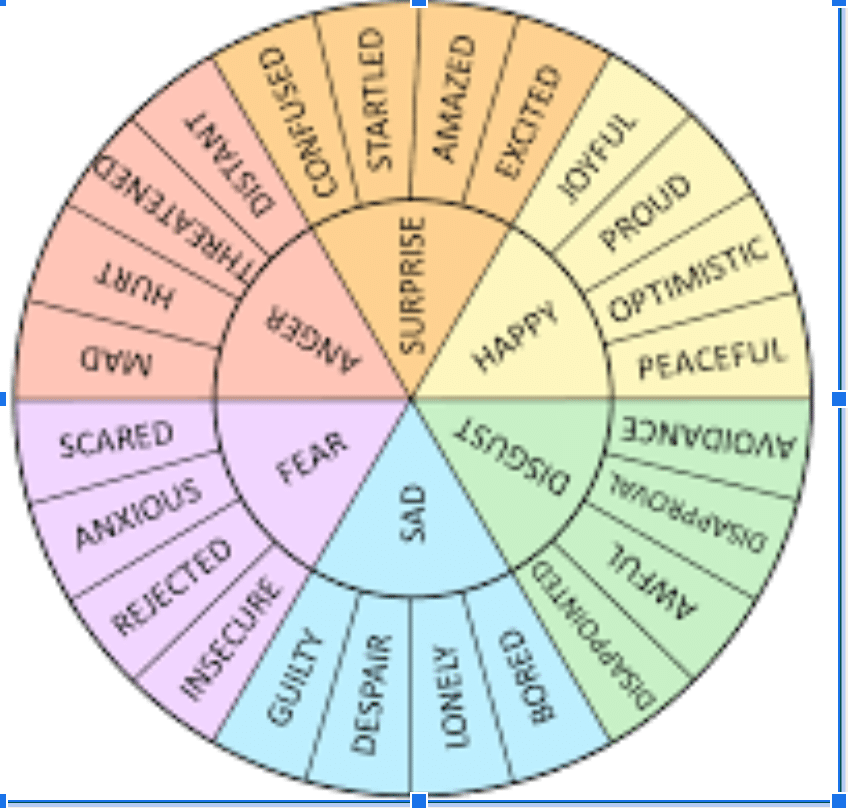
Identify Which Needs Your Child Needs to Have Met
(Note: This works for adults too! Read more about identifying what you are feeling and what needs are indicated.)
- When someone is in a regulated state then their needs are being met.
- Needs are not being met during dysregulation. There is miscommunication and/or disconnection.
- It often takes trial and error to figure out what need is required to have more stability, but you can get there just by continuing to try new ways.
- Try something new if what you are doing is not working.
This is a great list of needs we all share.
Additional Resources on Emotional Regulation for Teens and Adults:
-
Emotional Regulation Skills to Cope with Difficult Emotions: [7 Skills to Practice Today]
- Grounding Techniques for Self Soothing and Emotional Regulation
Schedule an Appointment with Jessie
Jessie is a specialist in regulation, behavior, and communication. She works with children, teens, young adults, and parents. Her background is in speech therapy serving the neurodiverse population and their families and utilizes those skills and more in her counseling work with children, parents, and young adults.

